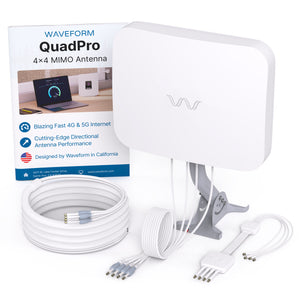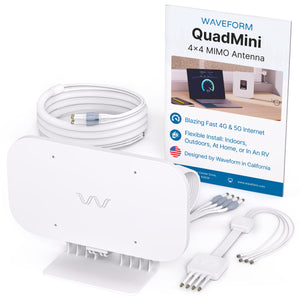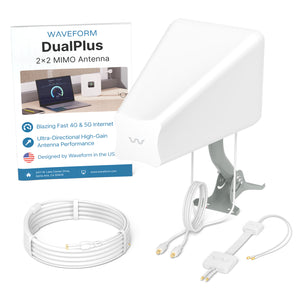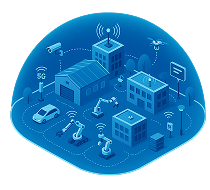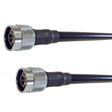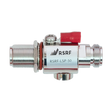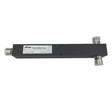Across the Mountain State, wireless gaps remain common. Rugged terrain surrounds many industrial sites, and heavy steel or concrete construction blocks public cellular signals inside plants and warehouses. At the same time, energy producers in the Marcellus and Utica shale fields depend on real-time data and voice links that WiFi simply cannot deliver outdoors. These constraints make West Virginia a textbook case for private 5G.
Why West Virginia Facilities Are Turning To Private 5G
-
Manufacturing And Heavy Industry
From metals fabrication in the Kanawha Valley to precision plastics near Parkersburg, production floors span hundreds of thousands of square feet. Machine vision cameras, autonomous forklifts, and quality-control tablets need uninterrupted throughput. WiFi access points mounted under a 60-foot roof cannot reach every corner, and commercial LTE gets lost among thick firewalls and machinery. Private 5G small cells cover the same area with far fewer radios, reducing both interference and maintenance.
-
Energy And Mining Operations
Gas processing plants around Morgantown and coal preparation facilities in Boone County demand intrinsically safe communications. CBRS spectrum gives owners full control of security policies while keeping traffic off the public internet. Private 5G also supports miles-long haul roads and remote well pads where trenching fiber is unrealistic.
-
Logistics And River Terminals
The Ohio and Kanawha Rivers remain vital freight corridors. At barge loading terminals, handheld scanners update ERP systems, and yard tractors rely on telematics. Outdoor private LTE/5G radios can blanket a 1.5-mile radius for roughly $100,000, a fraction of what a distributed antenna system or mesh WiFi would cost.
-
Healthcare Campuses
Charleston Area Medical Center and other regional hospitals balance HIPAA compliance with mobility. Private networks keep sensitive data on premises, allow cellular-like roaming between buildings, and integrate with existing VLANs.
Severe winters and humid summers introduce another wrinkle. Ice buildup can detune WiFi antennas, while unlicensed 5 GHz channels suffer from temperature-driven fading. CBRS operates at 3.55 GHz with dramatically higher permitted power, giving private 5G the link budget to punch through weather and foliage.
Spectrum Ownership
- WiFi uses unlicensed bands that anyone—including your neighbor's router—can occupy. Private 5G in the Citizens Broadband Radio Service (CBRS) band is lightly licensed. Your network receives an automated frequency assignment from the FCC's Spectrum Access System, shielding you from interference.
Coverage And Capacity
- A single indoor 4×4 MIMO small cell covers 50,000 square feet at industrial power levels. Outdoor macro-class radios reach up to one and a half miles. Achieving comparable coverage with WiFi may require dozens of access points and still fall short in moving vehicles.
Quality Of Service And Latency
- Private 5G uses the 3GPP QoS framework, letting you reserve guaranteed bandwidth for robotics or VoIP. Typical round-trip latency sits near 10 ms when data breaks out locally, compared with 30-plus ms over public LTE routed back to a carrier core.
Security And Control
- Traffic never leaves your firewall unless you want it to. SIM or eSIM authentication eliminates password sharing, and network slicing lets IT segregate OT devices from office laptops.
If you need a deeper dive into the technology, our Private Networks Guide explains spectrum, architecture, and device options in plain English.
Our Proven Design And Deployment Process
Rapid Site Snapshot
You send us a floor plan or geofence, desired capacity, and a list of client devices. Within three business days we provide a preliminary RF design, coverage heatmap, and budget range so you can confirm feasibility early.
Detailed Engineering
When you decide to move forward we build a full propagation model, develop a bill of materials, and finalize backhaul and power requirements. Because we are vendor agnostic we select the optimal combination of core software, radios, and edge devices from partners such as Celona, Baicells, Airspan, Peplink, and Zebra.
Turnkey Installation
Our field engineers handle mounting, fiber runs, and integration into your existing network. Day-one acceptance testing verifies throughput at every key point. We then hand over management dashboards or, if you prefer, monitor the network under an ongoing SLA.
Device On-Boarding
From intrinsically safe tablet cases to rugged handheld scanners, we configure SIM profiles and enroll equipment so your staff can focus on operations instead of RF settings.
Regional Experience You Can Trust
Waveform has delivered wireless solutions throughout the Mid-Atlantic. A recent project for a professional sports practice facility in New York required robust coverage for video streaming and coaching analytics across an 85,000-square-foot fieldhouse. Although this was not a private 5G deployment, it shows our ability to solve high-density connectivity challenges for demanding clients and underscores the breadth of our engineering bench.
Transparent Pricing
Indoor Environments
Turnkey private LTE or 5G deployments generally range from $1 to $2.50 per square foot depending on ceiling height, cabling complexity, and redundancy requirements. This includes radios, core software, installation, and first-year support.
Outdoor Campuses
Cost scales with acreage rather than square footage. In favorable terrain we can cover a 1.5-mile radius, roughly 7 square miles, for close to $100,000. Expanded coverage or ruggedized enclosures add incrementally, not exponentially.
Ongoing Costs
SIM licensing, software support, and remote monitoring typically run between $3 and $7 per device each month. Many clients offset that expense by eliminating recurring public LTE lines that often exceed $30 monthly.
Take The Next Step
Private 5G gives West Virginia's manufacturers, energy producers, and logistics operators the coverage and control they need to compete. Waveform delivers the entire solution from design to devices so you avoid hidden gaps and vendor finger-pointing.
Call us at (800) 637-4049 or get a custom private 5g design and quote today.























